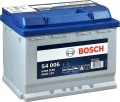Service
—
Serviced. Serviceable are only classic lead-acid batteries (see "Type"): they are easy to distinguish even externally — by the presence of removable plugs that give access to internal containers with electrolyte. The latter is a mixture of sulfuric acid and water, and with each charge, some of this water "boils away" (decomposes into oxygen and hydrogen and volatilizes). This is especially intense when overcharging or charging at high voltage. Battery maintenance consists in periodically replenishing the water in the electrolyte — without this, lowering its level leads to damage to the plates due to contact with air, which irreparably degrades battery performance. On average, maintenance should be carried out 1-2 times a year (15-20K kilometers for a passenger car) and these terms usually coincide with the terms of scheduled maintenance. However, this value may vary depending on the features of both the battery itself and its operation; more detailed information is usually contained in the instructions for specific models. "Refilling" should be done exclusively with distilled water, because. even a relatively small amount of foreign matter can damage the wafers.
—
Unattended. As the name suggests, these batteries do not require the maintenance described above; this is achieved in a number of ways, in particular by filling the electrolyte with a margin for the entire service life or using a gel (se
...e "Type"). With clear advantages due to ease of use, maintenance-free batteries at the same time have one drawback: they are much more sensitive to deep discharge (capacity decreases), and, accordingly, they tolerate cold and long periods of inactivity worse.Starting power (EN)
Battery starting current measured in accordance with EN (Uniform European Standard). According to this standard, the starting current is the maximum current that a battery at an electrolyte temperature of -18 °C can produce for 30 seconds without a voltage drop below a certain level (for standard 12 V batteries — not lower than 7.2 V). The term "starting" appeared because this mode of operation is similar to starting the engine, when the battery has to supply a high power current to the starter for a short time.
The recommended value of the starting current is generally related to the weight category of the machine: the heavier it is, the more powerful current is usually needed to start. And many manufacturers directly indicate the recommended values \u200b\u200bin the characteristics of a particular model of transport. If the battery is bought as a replacement, then the general rule is that its starting current must be no less than that of its predecessor.
Note that in fact there may be designations of starting current according to 3 more standards: SAE (USA), DIN (Germany) and TU (GOST 959-91, Russia). The first one is practically identical to EN, while DIN and TU are quite easy to convert to EN and vice versa: they are similar to each other, and each of them gives a number approximately 1.7 times less than NE. That is, for example, to replace a battery with 200 A according to specifications, you should look for a model with a current of at least 340...A (200 * 1.7) according to EN.

